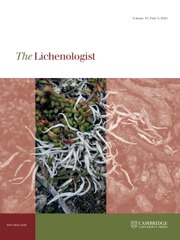No CrossRef data available.
Article contents
Red Listing lichenized fungi: best practices and future prospects
Published online by Cambridge University Press: 31 December 2024
Abstract
According to International Union for the Conservation of Nature (IUCN) guidelines, all species must be assessed against all criteria during the Red Listing process. For organismal groups that are diverse and understudied, assessors face considerable challenges in assembling evidence due to difficulty in applying definitions of key terms used in the guidelines. Challenges also arise because of uncertainty in population sizes (Criteria A, C, D) and distributions (Criteria A2/3/4c, B). Lichens, which are often small, difficult to identify, or overlooked during biodiversity inventories, are one such group for which specific difficulties arise in applying Red List criteria. Here, we offer approaches and examples that address challenges in completing Red List assessments for lichens in a rapidly changing arena of data availability and analysis strategies. While assessors still contend with far from perfect information about individual species, we propose practical solutions for completing robust assessments given the currently available knowledge of individual lichen life-histories.
Keywords
- Type
- Review Article
- Information
- Copyright
- Copyright © The Author(s), 2024. Published by Cambridge University Press on behalf of the British Lichen Society
Footnotes
Communicating authors who contributed equally to the work



